Shifting Centres: Site Location and Resource Procurement on the North Coast of Cyprus over the Longue Durée of the Prehistoric Bronze Age
Abstract
:1. Introduction
2. The Physical Environment
3. Vasilia, Vounous, and Lapithos
3.1. Vasilia
3.2. Vounous
3.3. Vounous and Lapithos
4. Beyond-Village Settlements
4.1. The Question of Imports
4.2. North Coast Artefact Production and Trade
5. The Issue of Centrality
6. Central Places and Central Flows
7. Conclusions
Acknowledgments
Conflicts of Interest
References
- Beckmann, M.J. Lectures on Location Theory; Springer: Berlin/Heidelberg, Germany, 1999; ISBN 9783540657361. [Google Scholar]
- Manning, S.W. Appendix: A new radiocarbon chronology for prehistoric and protohistoric Cyprus, ca. 11,000–1050 Cal BC. In The Archaeology of Cyprus. From Earliest Prehistory through the Bronze Age; Knapp, A.B., Ed.; Cambridge University Press: Cambridge, UK, 2013; pp. 485–534. ISBN 978-0521897822. [Google Scholar]
- Manning, S.W. Cyprus at 2200 BC: Rethinking the chronology of the Cypriot Early Bronze Age. In J.R.B Stewart: An Archaeological Legacy on Cyprus; Knapp, A.B., Webb, J.M., McCarthy, A., Eds.; Studies in Mediterranean Archaeology 139; Åströms Förlag: Uppsala, Sweden, 2013; pp. 1–22. ISBN 9789170812538. [Google Scholar]
- Peltenburg, E.; Frankel, D.; Paraskeva, C. Radiocarbon. In Associated Regional Chronologies for the Ancient Near East and Eastern Mediterranean Volume II. Cyprus; Peltenburg, E., Ed.; Brepols: Turnhout, Belgium, 2013; pp. 313–338. ISBN 9782503534985. [Google Scholar]
- Pilides, D.; Mina, M. (Eds.) Four Decades of Hiatus in Archaeological Research in Cyprus: Towards Restoring the Balance; Kypriaka—Forschungen zum Antiken Zypern: Studies on Ancient Cyprus 2; Department of Antiquities, Cyprus, Verlag Holzhausen GmbH: Wien, Austria, 2017; ISBN 978-3-903207-03-5. [Google Scholar]
- Webb, J.M.; Frankel, D.; Eriksson, K.O.; Hennessy, J.B. The Bronze Age Cemeteries at Karmi Palealona and Lapatsa in Cyprus. Excavations by J.R.B. Stewart; Studies in Mediterranean Archaeology 136; Åströms Förlag: Sävedalen, Sweden, 2009; ISBN 978-9170812415. [Google Scholar]
- Webb, J.M.; Frankel, D. Ambelikou Aletri. Metallurgy and Pottery Production in Middle Bronze Age Cyprus; Studies in Mediterranean Archaeology 138; Åströms Förlag: Uppsala, Sweden, 2013; ISBN 978-91-7081-250-7. [Google Scholar]
- Webb, J.M.; Frankel, D. Cultural regionalism and divergent social trajectories in Early Bronze Age Cyprus. Am. J. Arch. 2013, 117, 59–81. [Google Scholar] [CrossRef]
- Webb, J.M. Vounoi (Vounous) and Lapithos in the Early and Middle Bronze Age: A reappraisal of the central north coast of Cyprus in the light of fieldwork and research undertaken since 1974. In Four Decades of Hiatus in Archaeological Research in Cyprus: Towards Restoring the Balance; Pilides, D., Mina, M., Eds.; Kypriaka—Forschungen zum Antiken Zypern: Studies on Ancient Cyprus 2; Verlag Holzhausen GmbH & Department of Antiquities, Cyprus: Wien, Austria, 2017; pp. 128–139. ISBN 978-3-903207-03-5. [Google Scholar]
- Dikomitou-Eliadou, M. Interactive communities at the dawn of the Cypriot Bronze Age: An interdisciplinary approach to Philia Phase ceramic variability. In J.R.B Stewart: An Archaeological Legacy on Cyprus; Knapp, A.B., Webb, J.M., McCarthy, A., Eds.; Studies in Mediterranean Archaeology 139; Åströms Förlag: Uppsala, Sweden, 2013; pp. 23–31. ISBN 978-9170812415. [Google Scholar]
- Dikomitou-Eliadou, M. Rescaling perspectives: Local and island-wide ceramic production in Early and Middle Bronze Age Cyprus. In Structure, Measurement and Meaning. Studies on Prehistoric Cyprus in Honour of David Frankel; Webb, J.M., Ed.; Studies in Mediterranean Archaeology 14; Åströms Förlag: Uppsala, Sweden, 2014; pp. 199–211. ISBN 9789198153514. [Google Scholar]
- Dikomitou-Eliadou, M.; Zomeni, Z. From north to south: Red Polished Fyliia (Philia) pottery production and distribution patterns at the beginning of the Cypriot Bronze Age. In Four Decades of Hiatus in Archaeological Research in Cyprus: Towards Restoring the Balance; Pilides, D., Mina, M., Eds.; Kypriaka—Forschungen zum Antiken Zypern: Studies on Ancient Cyprus 2; Verlag Holzhausen GmbH & Department of Antiquities, Cyprus: Wien, Austria, 2017; pp. 92–103. ISBN 978-3-903207-03-5. [Google Scholar]
- Charalambous, A.; Webb, J.M. A compositional study of Cypriot copper alloy artefacts dating to the Middle Bronze Age using portable XRF spectroscopy. Unpublished manuscript, in preparation.
- Stos-Gale, Z.A.; Gale, N.H. Bronze Age metal artefacts found on Cyprus—Metal from Anatolia and the Western Mediterranean. Trab. Prehist. 2010, 67, 385–399. [Google Scholar] [CrossRef]
- Stos-Gale, Z.A. Patterns of trade in Cypriot copper in the Bronze Age eastern Mediterranean revealed using data from Oxford Archaeological Lead Isotope Database (OXALID). In Copper and Trade in the South-Eastern Mediterranean: Trade Routes of the Near East in Antiquity; Rosińska-Balik, K., Ochał-Czarnowicz, A., Czarnowicz, M., Dębowska-Ludwin, J., Eds.; British Archaeological Reports International Series 2753; Archaeopress: Oxford, UK, 2015; pp. 111–122. ISBN 9781407314143. [Google Scholar]
- Knitter, D.; Blum, H.; Horejs, B.; Nakoinz, O.; Schütt, B.; Meyer, M. Integrated centrality analysis: A diachronic comparison of selected Western Anatolian locations. Quat. Int. 2013, 312, 45–56. [Google Scholar] [CrossRef]
- Catling, H.W. Patterns of settlement in Bronze Age Cyprus. Opusc. Athen. 1962, 4, 129–169. [Google Scholar]
- Swiny, S. Bronze Age settlement patterns in southwest Cyprus. Levant 1981, 13, 51–87. [Google Scholar] [CrossRef]
- Given, M.; Knapp, A.B. The Sydney Cyprus Survey Project. Social Approaches to Regonal Archaeological Survey. Monumenta Archaeologica. 21; The Cotsen Institute of Archaeology: Los Angeles, CA, USA, 2003; ISBN 9781931745048. [Google Scholar]
- Nagle, G. Changing Settlements; Nelson Thornes Ltd.: Cheltenham, UK, 2004; ISBN 017490021X. [Google Scholar]
- Christodoulou, D. The Evolution of the Rural Land Use Pattern in Cyprus; Geographical Publications Limited: London, UK, 1959. [Google Scholar]
- Noller, J.S. Physical foundations of Phlamoudhi. In Views from Phlamoudhi, Cyprus; Smith, J.S., Ed.; The Annual of the American Schools of Oriental Research 63; American Schools of Oriental Research: Boston, MA, USA, 2008; pp. 25–29. ISBN 9780897570763. [Google Scholar]
- Constantinou, G.; Panayides, I. Κύπρος και Γεωλογία: Επιστήμη—Περιβάλλον—Πολιτισμός; Bank of Cyprus Cultural Foundation: Nicosia, Cyprus, 2013; ISBN 9789963429400. [Google Scholar]
- Georgiou, G. The political division of a culturally unified island: The case of the Early and Middle Bronze Age in the northern part of Cyprus. In Four Decades of Hiatus in Archaeological Research in Cyprus: Towards Restoring the Balance; Pilides, D., Mina, M., Eds.; Kypriaka—Forschungen zum Antiken Zypern: Studies on Ancient Cyprus 2; Verlag Holzhausen GmbH & Department of Antiquities, Cyprus: Wien, Austria, 2017; pp. 114–126. ISBN 978-3-903207-03-5. [Google Scholar]
- Knapp, A.B. Seafaring and Seafarers in the Bronze Age Eastern Mediterranean; Sidestone Press: Leiden, The Netherlands, 2018; ISBN 9789088905544. [Google Scholar]
- Iacovou, M. Historically elusive and internally fragile island polities: The intricacies of Cyprus’s political geography in the Iron Age. Bull. Am. Sch. Orient. Res. 2013, 370, 15–47. [Google Scholar] [CrossRef]
- Manning, S.W. Timings and gaps in the early history of Cyprus and its copper trade—What these might tell us. In Structure, Measurement and Meaning. Studies on Prehistoric Cyprus in Honour of David Frankel; Webb, J.M., Ed.; Studies in Mediterranean Archaeology 143; Åströms Förlag: Uppsala, Sweden, 2014; pp. 23–41. ISBN 9789198153514. [Google Scholar]
- Manning, S.W. Environment and sociopolitical complexity on prehistoric Cyprus: Observations, trajectories and sketch. In New Directions in Cypriot Archaeology; Kearns, C., Manning, S.W., Eds.; Cornell University Press: Ithaca, NY, USA, in press.
- Myres, J.L. Excavations in Cyprus, 1913: A Bronze Age cemetery at Lapithos. Ann. Br. Sch. Athens 1940, 41, 78–85. [Google Scholar] [CrossRef]
- Diakou, S. The Upper Geometric Cemetery at Lapithos. Pennsylvania Museum Excavations 1931–1932; Studies in Mediterranean Archaeology 146; Åströms Förlag: Uppsala, Sweden, 2018; ISBN 978-91-981535-3-8. [Google Scholar]
- Peltenburg, E. From isolation to state formation in Cyprus, ca. 3500–1500 B.C. In The Development of the Cypriot Economy from the Prehistoric Period to the Present Day; Karageorghis, V., Michaelides, D., Eds.; University of Cyprus and Bank of Cyprus: Nicosia, Cyprus, 1996; pp. 17–44. ISBN 9789963607105. [Google Scholar]
- Massa, M.; Palmisano, A. Change and continuity in the long-distance exchange networks between western/central Anatolia, northern Levant and northern Mesopotamia, c.3200–1600 BCE. J. Anthropol. Archaeol. 2018, 49, 65–87. [Google Scholar] [CrossRef]
- Knapp, A.B. The Archaeology of Cyprus. From Earliest Prehistory through the Bronze Age; Cambridge University Press: Cambridge, UK, 2013; ISBN 978-0521897822. [Google Scholar]
- Peltenburg, E. Conclusions. In Associated Regional Chronologies for the Ancient Near East and the Eastern Mediterranean. Volume II. Cyprus; Peltenburg, E., Ed.; Brepols: Turnhout, Belgium, 2013; pp. 339–348. ISBN 9782503534985. [Google Scholar]
- Webb, J.M. Changing technological and social environments in the second half of the third millennium BCE in Cyprus. In Archaeology in Environment and Technology: Intersections and Transformations; Frankel, D., Webb, J.M., Lawrence, S., Eds.; Routledge Studies in Archaeology; Routledge: London, UK; New York, NY, USA, 2013; pp. 135–148. ISBN 9780415832014. [Google Scholar]
- Şahoğlu, V. The Anatolian Trade Network and the Izmir region during the Early Bronze Age. Oxf. J. Arch. 2005, 24, 339–361. [Google Scholar] [CrossRef]
- Efe, T. The theories of the ‘Great Caravan Route’ between Cilicia and Troy: The Early Bronze Age III period in inland western Anatolia. Anatol. Stud. 2007, 57, 47–64. [Google Scholar] [CrossRef]
- Constantinou, G. Late Bronze Age copper production in Cyprus from a mining geologist’s perspective. In Eastern Mediterranean Metallurgy and Metalwork in the Second Millennium BC; Kassianidou, V., Papasavvas, G., Eds.; Oxbow Books: Oxford, UK, 2012; pp. 4–13. ISBN 978-1842174531. [Google Scholar]
- Kassianidou, V. Metals. In Associated Regional Chronologies for the Ancient Near East and the Eastern Mediterranean. Volume II. Cyprus; Peltenburg, E., Ed.; Brepols: Turnhout, Belgium, 2013; pp. 231–249. ISBN 9782503534985. [Google Scholar]
- Webb, J.M. ‘The mantle of Vasilia’: Have Stewart’s views on the centrality of the copper trade in prehistoric Bronze Age Cyprus stood the test of time? In J.R.B Stewart: An Archaeological Legacy on Cyprus; Knapp, A.B., Webb, J.M., McCarthy, A., Eds.; Studies in Mediterranean Archaeology 139; Åströms Förlag: Uppsala, Sweden, 2013; pp. 59–71. ISBN 978-9170812415. [Google Scholar]
- Stewart, J.R.B. The Early Cypriote Bronze Age. In The Swedish Cyprus Expedition; Volume, I.V., Part, I.A., Dikaios, P., Stewart, J.R.B., Eds.; Swedish Cyprus Expedition: Lund, Sweden, 1962; pp. 205–401. [Google Scholar]
- Hennessy, J.B.; Eriksson, K.O.; Kehrberg, I. Ayia Paraskevi and Vasilia. Excavations by J.R.B. Stewart; Studies in Mediterranean Archaeology 82; Paul Åströms Förlag: Göteborg, Sweden, 1988; ISBN 978-9186098797. [Google Scholar]
- Swiny, S. The Early Bronze Age. In A History of Cyprus; Papadopoulos, T., Ed.; Archbishop Makarios III Foundation: Nicosia, Cyprus, 1997; Volume 1, pp. 171–212. [Google Scholar]
- Georgiou, G. The Topography of Human Settlement in Cyprus in the Early and Middle Bronze Age. Ph.D. Thesis, University of Cyprus, Nicosia, Cyprus, 2007. (In Greek). [Google Scholar]
- Webb, J.M.; Frankel, D. Characterizing the Philia facies. Material culture, chronology, and the origin of the Bronze Age in Cyprus. Am. J. Arch. 1999, 103, 3–43. [Google Scholar] [CrossRef]
- Peltenburg, E. The entry of Cyprus into the circum-Aegean world and the growth of regionalism on the island. In Communities in Transition. The Circum-Aegean Area during the 5th and 4th Millennia BC; Dietz, S., Mavridis, F., Tankosić, Z., Takaoğlu, T., Eds.; Monographs of the Danish Institute at Athens 20; Oxbow Books: Oxford, UK; Philadelphia, PA, USA, 2018; pp. 456–465. ISBN 9781785707209. [Google Scholar]
- Frankel, D.; Webb, J.M. Marki Alonia. An Early and Middle Bronze Age Settlement in Cyprus. Excavations 1995–2000; Studies in Mediterranean Archaeology 123.2; Paul Åströms Förlag: Sävedalen, Sweden, 2006; ISBN 9789170812187. [Google Scholar]
- Giardino, C.; Gigante, G.E.; Ridolfi, S. Archaeometallurgical studies. In Sotira Kaminoudhia: An Early Bronze Age Site in Cyprus; Swiny, S., Rapp, G., Herscher, E., Eds.; American Schools of Oriental Research Archaeological Reports 8, CAARI Monograph Series 4; American Schools of Oriental Research: Boston, MA, USA, 2003; pp. 385–396. ISBN 9780897570640. [Google Scholar]
- Given, M.; Knapp, A.B.; Sollars, L.; Noller, J.S.; Kassianidou, V. (Eds.) Landscape and Interaction: The Troodos Archaeological and Environmental Survey Project, Cyprus. Volume 2: The TAESP Landscape; Levant Supplementary Series 15; Council for British Research in the Levant/Oxbow: London, UK, 2013; ISBN 9781782971887. [Google Scholar]
- Webb, J.M.; Frankel, D.; Stos, Z.A.; Gale, N. Early Bronze Age metal trade in the Eastern Mediterranean. New compositional and lead isotope evidence from Cyprus. Oxf. J. Arch. 2006, 25, 261–288. [Google Scholar] [CrossRef]
- Meller, H.; Wolfgang Arz, H.; Jung, R.; Risch Halle, R. 2200 BC—Ein Klimasturz als Ursache für den Zerfall der Alten Welt? 2200 BC: A Climatic Breakdown as a Cause for the Collapse of the Old World? 7. Mitteldeutscher Archäologentag vom 23. bis 26. Oktober 2014 in Halle (Saale); Landesmuseum für Vorgeschichte: Halle, Germany, 2015; ISSN 18674402. [Google Scholar]
- Dikaios, P. The Excavations at Vounous-Bellapais in Cyprus, 1931–2; Archaeologia 88; Society of Antiquaries: London, UK, 1940. [Google Scholar]
- Stewart, E.; Stewart, J.R. Vounous 1937–38. Field-Report on the Excavations Sponsored by the British School of Archaeology at Athens; C.W.K. Gleerup: Lund, Sweden, 1950; ISSN 0081993X. [Google Scholar]
- Dunn-Vaturi, A.-E. Vounous. C.F.A. Schaeffer’s Excavations in 1933 Tombs 49–79; Studies in Mediterranean Archaeology 130; Paul Åströms Förlag: Jonsered, Sweden, 2003; ISBN 9789170811913. [Google Scholar]
- Webb, J.M.; Frankel, D. Social strategies, ritual and cosmology in Early Bronze Age Cyprus: An investigation of burial data from the north coast. Levant 2010, 42, 185–209. [Google Scholar] [CrossRef]
- Webb, J.M. Pots and people: An investigation of individual and collective identities in Early Bronze Age Cyprus. In An Archaeology of Prehistoric Bodies and Embodied Identities in the Eastern Mediterranean; Mina, M., Triantaphyllou, S., Papadatos, Y., Eds.; Oxbow Book: Oxford, UK, 2016; pp. 55–62. ISBN 9781785702921. [Google Scholar]
- Webb, J.M. Socio-spatial discontinuities in burial ritual in prehistoric Bronze Age Cyprus. In Unlocking Sacred Landscapes: Spatial Analysis of Ritual and Cult in the Mediterranean; Papantoniou, G., Morris, C., Vionis, A., Eds.; Studies in Mediterranean Archaeology; Åströms Förlag: Uppsala, Sweden, in press.
- Keswani, P.S. Mortuary Ritual and Society in Bronze Age Cyprus; Equinox: London, UK, 2004; ISBN 1904768032. [Google Scholar]
- Keswani, P.S. Death, prestige, and copper in Bronze Age Cyprus. Am. J. Arch. 2005, 109, 341–401. [Google Scholar] [CrossRef]
- Manning, S.W. Prestige, distinction, and competition: The anatomy of socioeconomic complexity in fourth and second millennium B.C.E. Cyprus. Bull. Am. Sch. Orient. Res. 1993, 292, 35–58. [Google Scholar] [CrossRef]
- Bolger, D. Gender in Ancient Cyprus. Narratives of Social Change on a Mediterranean Island; Altamira Press: Walnut Creek, CA, USA, 2003; ISBN 9780759104303. [Google Scholar]
- Steel, L. Cyprus before History. From the Earliest Settlers to the End of the Bronze Age; Duckworth & Co. Ltd.: London, UK, 2004; ISBN 9780715631645. [Google Scholar]
- Knapp, A.B. Prehistoric and Protohistoric Cyprus. Identity, Insularity and Connectivity; Oxford University Press: Oxford, UK, 2008; ISBN 9780199237371. [Google Scholar]
- Crewe, L. A reappearing Early Bronze Age in western Cyprus. In Structure, Measurement and Meaning. Studies on Prehistoric Cyprus in Honour of David Frankel; Webb, J.M., Ed.; Studies in Mediterranean Archaeology 143; Åströms Förlag: Uppsala, Sweden, 2014; pp. 137–149. ISBN 9789198153514. [Google Scholar]
- Frankel, D.; Webb, J.M. Pottery production and distribution in prehistoric Bronze Age Cyprus. An application of pXRF analysis. J. Arch. Sci. 2012, 39, 1380–1387. [Google Scholar] [CrossRef]
- Georgiou, G. The area of the Skouriotissa mine during the Bronze Age. In Structure, Measurement and Meaning. Studies on Prehistoric Cyprus in Honour of David Frankel; Webb, J.M., Ed.; Studies in Mediterranean Archaeology 143; Åströms Förlag: Uppsala, Sweden, 2014; pp. 109–136. ISBN 9789198153514. [Google Scholar]
- Webb, J.M. Pottery production and distribution in prehistoric Bronze Age Cyprus: The long road from measurement to meaning. In Structure, Measurement and Meaning. Studies on Prehistoric Cyprus in Honour of David Frankel; Webb, J.M., Ed.; Studies in Mediterranean Archaeology 143; Åströms Förlag: Uppsala, Sweden, 2014; pp. 213–227. ISBN 9789198153514. [Google Scholar]
- Gjerstad, E.; Lindros, J.; Sjöqvist, E.; Westholm, A. The Swedish Cyprus Expedition. Finds and Results of the Excavations in Cyprus 1927–1931; The Swedish Cyprus Expedition: Stockholm, Sweden, 1934; Volume I. [Google Scholar]
- Grace, V. A Cypriote tomb and Minoan evidence for its date. Am. J. Arch. 1940, 44, 10–52. [Google Scholar] [CrossRef]
- Herscher, E. The Bronze Age Cemetery at Lapithos, Vrysi tou Barba, Cyprus. Results of the University of Pennsylvania Museum Excavation, 1931. Ph.D. Thesis, University of Pennsylvania, Philadelphia, PA, USA, 1978. [Google Scholar]
- Herscher, E. New light from Lapithos. In The Archaeology of Cyprus. Recent Developments; Robertson, N., Ed.; Noyes Press: Park Ridge, NJ, USA, 1975; pp. 39–60. ISBN 9780815550396. [Google Scholar]
- Gjerstad, E. Studies on Prehistoric Cyprus; Lundequistska: Uppsala, Sweden, 1926. [Google Scholar]
- Karageorghis, V. Ten years of archaeology in Cyprus, 1953–1962. Arch. Anz. 1963, 78, 498–601. [Google Scholar]
- Karageorghis, V. Chronique de fouilles et découvertes archéologiques à Chypre en 1968. Bull. Corresp. Hell. 1969, 93, 431–569. [Google Scholar]
- Webb, J.M. Lapithos revisited: A fresh look at a key Middle Bronze Age site in Cyprus. In Ancient Cyprus Today: Museum Collections and New Research; Bourogiannis, G., Mühlenbock, C., Eds.; Studies in Mediterranean Archaeology PB 184; Åströms Förlag: Uppsala, Sweden, 2016; pp. 57–67. ISBN 9789170812170. [Google Scholar]
- Frankel, D.; Webb, J.M. The Bronze Age Cemeteries at Deneia in Cyprus; Studies in Mediterranean Archaeology 135; Paul Åströms Förlag: Sävedalen, Sweden, 2007; ISBN 9789170812354. [Google Scholar]
- Webb, J.M.; Frankel, D. Coincident biographies. Bent and broken blades in Bronze Age Cyprus. In Thravsma. Damaged Goods. Contextualising Intentional Destruction of Objects in the Bronze Age Aegean and Cyprus; Driessen, J., Harrell, K., Eds.; AEGIS, Actes de Colloques 09; UCL Presses Universitaires de Louvain: Louvain, 2015; pp. 117–142. ISBN 9782875585400. [Google Scholar]
- Knapp, A.B. Revolution within evolution: The emergence of a ‘secondary state’ on Protohistoric Bronze Age Cyprus. Levant 2013, 45, 19–44. [Google Scholar] [CrossRef]
- Knapp, A.B. The emergence of the state on prehistoric Cyprus: J.R.B. Stewart and V. Gordon Childe’. In J.R.B Stewart: An Archaeological Legacy on Cyprus; Knapp, A.B., Webb, J.M., McCarthy, A., Eds.; Studies in Mediterranean Archaeology 139; Åströms Förlag: Uppsala, Sweden, 2013; pp. 109–119. ISBN 978-9170812415. [Google Scholar]
- Knapp, A.B. Production, location and integration in Bronze Age Cyprus. Curr. Anthropol. 1990, 31, 147–176. [Google Scholar] [CrossRef]
- Knapp, A.B. Social complexity: Incipience, emergence and development on prehistoric Cyprus. Bull. Am. Sch. Orient. Res. 1993, 292, 85–106. [Google Scholar] [CrossRef]
- Merrillees, R.S. The stone vases of the Philia culture from Vasilia: Cypriot, Egyptian or other? In Egypt and Cyprus in Antiquity; Michaelides, D., Kassianidou, V., Merrillees, R., Eds.; Oxbow Books: Oxford, UK, 2009; pp. 23–28. ISBN 9781782973010. [Google Scholar]
- Karageorghis, V. Chronique des fouilles et découvertes archéologiques à Chypre en 1959. Bull. Corresp. Hell. 1960, 84, 242–299. [Google Scholar] [CrossRef]
- Stos-Gale, Z.A.; Gale, N.H. Metals. In Provenience Studies and Bronze Age Cyprus. Production, Exchange and Politico-Economic Change; Knapp, A.B., Cherry, J.F., Eds.; Monographs in World Archaeology 21; Prehistory Press: Madison, WI, USA, 1994; pp. 92–121. ISBN 9781881094104. [Google Scholar]
- Swiny, S. The metal. In Sotira Kaminoudhia: An Early Bronze Age Site in Cyprus; Swiny, S., Rapp, G., Herscher, E., Eds.; American Schools of Oriental Research Archaeological Reports 8, Cyprus Monograph Series 4; American Schools of Oriental Research: Boston, MA, USA, 2003; pp. 369–384. ISBN 9780897570640. [Google Scholar]
- Goldman, H. Excavations at Gözlu Kule, Tarsus II. From the Neolithic through the Bronze Age; Princeton University Press: Princeton, NJ, USA, 1956. [Google Scholar]
- Mellink, M. Anatolian contacts with Chalcolithic Cyprus. Bull. Am. Sch. Orient Res. 1991, 282, 167–175. [Google Scholar] [CrossRef]
- Peltenburg, E.J. Kissonerga-Mosphilia: A major Chalcolithic site in Cyprus. Bull. Am. Sch. Orient Res. 1991, 282, 17–35. [Google Scholar] [CrossRef]
- Buchholz, H.-G.; Karageorghis, V. Prehistoric Greece and Cyprus. An Archaeological Handbook; Phaidon: London, UK, 1973. [Google Scholar]
- Bittel, K. Der Depotfund von Soloi-Pompeiopolis. Zeitschrift. Fur Assyriologie und Vorderasiatische archaologie 1940, 12, 183–205. [Google Scholar] [CrossRef]
- Catling, H.W. Cypriot Bronzework in the Mycenaean World; Clarendon Press: London, UK, 1964. [Google Scholar]
- Catling, H.W.; Karageorghis, V. Minoika in Cyprus. Ann. Br. Sch. Athens 1960, 55, 109–127. [Google Scholar] [CrossRef]
- Branigan, K. Byblite daggers in Cyprus and Crete. Am. J. Arch. 1966, 70, 123–126. [Google Scholar] [CrossRef]
- Balthazar, J.W. Copper and Bronze Working in Early through Middle Bronze Age Cyprus; Studies in Mediterranean Archaeology and Literature Pocket-book 84; Paul Åströms Förlag: Jonsered, Sweden, 1990; ISBN 978-9185058464. [Google Scholar]
- Catling, H.W.; MacGillivray, J.A. An Early Cypriot II vase from the Palace at Knossos. Ann. Br. Sch. Athens 1983, 78, 1–8. [Google Scholar] [CrossRef]
- Graziadio, G. A Middle Cypriot unique bowl from eastern Crete and the earliest contacts between Cyprus and the Aegean. In Φιλική Συναυλία: Studies in Mediterranean Archaeology for Mario Benzi; Graziadio, G., Guglielmino, R., Lenuzza, V., Vitale, S., Eds.; British Archaeological Reports International Series S2460; Archaeopress: Oxford, UK, 2013; pp. 165–175. ISBN 9781407310688. [Google Scholar]
- Symington, D. The Early Bronze Age pottery. In Excavations at Kilise Tepe, 1994–98. From Bronze Age to Byzantine in Western Cilicia; Postgate, N., Thomas, D., Eds.; McDonald Institute for Archaeological Research: Cambridge, UK, 2007; pp. 295–318. ISBN 9781902937403. [Google Scholar]
- Rehren, T.; Asderaki, E.; Skafida, E.; Karnava, A. The Bronze Age crucibles from Iolkos—Palaio Kastro, Volos—A contradiction of form and function? Hist. Metall. 2013, 47, 111–124. [Google Scholar]
- Asderaki-Tzoumerkioti, A.; Rehren, T.; Skafida, E.; Vaxevanopoulos, M.; Connolly, P.J. Kastro Palaia settlement, Volos, Greece: A diachronical technological approach to bronze metalwork. STAR Sci. Technol. Archaeol. Res. 2018, 1–15. [Google Scholar] [CrossRef]
- Stos-Gale, Z. Personal communication. April 2018. [Google Scholar]
- Bear, L.M. The Mineral. Resources and Mining Industry of Cyprus; Bulletin No. 1; Geological Survey Department Cyprus: Nicosia, Cyprus, 1963. [Google Scholar]
- Muhly, J.D. Sources of tin and the beginnings of bronze metallurgy. Am. J. Arch. 1985, 89, 275–291. [Google Scholar] [CrossRef]
- Swiny, S. Correlations between the composition and function of Bronze Age metal types in Cyprus. In Early Metallurgy in Cyprus; Muhly, J.D., Maddin, R., Karageorghis, V., Eds.; Pierides Foundation: Nicosia, Cyprus, 1982; pp. 69–79. [Google Scholar]
- Pollard, A.M.; Bray, P. Chemical and isotopic studies of ancient metals. In Archaeometallurgy in Global Perspective: Methods and Syntheses; Roberts, B.W., Thornton, C.P., Eds.; Springer: New York, NY, USA, 2014; pp. 217–238. [Google Scholar]
- Massa, M.; McIlfatrick, O.; Fidan, E. Patterns of metal procurement, manufacture and exchange in Early Bronze Age northwestern Anatolia: Demircihüyük and beyond. Anatol. Stud. 2017, 67, 51–83. [Google Scholar] [CrossRef]
- Panayiotou, A. Cu-Ni-Co-Fe sulphide mineralization, Limassol Forest, Cyprus. In Ophiolites. Proceedings of the International Ophiolite Symposium (Nicosia, Cyprus, 1979); Panayiotou, A., Ed.; Geological Survey Department: Nicosia, Cyprus, 1980; pp. 102–116. [Google Scholar]
- Gale, N.H.; Stos-Gale, Z.A.; Fasnacht, W. Appendix 2. Copper and copper working at Alambra. In Alambra. A Middle Bronze Age Settlement in Cyprus. Archaeological Investigations by Cornell University 1974–1985; Coleman, J.E., Barlow, J.A., Mogelonsky, M.K., Schaar, K.W., Eds.; Studies in Mediterranean Archaeology 128; Paul Åströms Förlag: Jonsered, Sweden, 1996; pp. 359–426. ISBN 9789170811562. [Google Scholar]
- Belgiorno, M.R. Progetto Pyrame: Pyrgos ricerche archeologiche e archeometallurgiche, lo stato dell’arte a dicembre 2008. In Cipro all’Inizio dell’Età del Bronzo. Realtà sconosciute della comunità industrial di Pyrgos/Mavroraki; Belgiorno, M.R., Ed.; Gangemi: Rome, Italy, 2009; pp. 14–105. ISBN 9788849217216. [Google Scholar]
- Swiny, S. The Kent State University Expedition to Episkopi Phaneromeni, Part 2, Studies in Mediterranean Archaeology 74.2; Paul Åströms Förlag: Nicosia, Cyprus, 1986; ISBN 9789186098407. [Google Scholar]
- Wheeler, E.C. Metal artifacts. In Vasilikos Valley Project 1: The Bronze Age Cemetery in Kalavasos Village; Todd, I.A., Ed.; Studies in Mediterranean Archaeology 71.1; Paul Åströms Förlag: Göteborg, Sweden, 1986; pp. 159–165. ISBN 9789170812286. [Google Scholar]
- Åström, P. Katydhata. A Bronze Age Site in Cyprus; Studies in Mediterranean Archaeology 86; Paul Åströms Förlag: Partille, Sweden, 1989; ISBN 9789186098476. [Google Scholar]
- Gale, N.H.; Stos-Gale, Z.A.; Fasnacht, W. Metal and metalworking. In Alambra. A Middle Bronze Age Settlement in Cyprus. Archaeological Investigations by Cornell University 1974–1985; Coleman, J.E., Barlow, J.A., Mogelonsky, M.K., Schaar, K.W., Eds.; Studies in Mediterranean Archaeology 128; Paul Åströms Förlag: Jonsered, Sweden, 1996; pp. 129–142. ISBN 9789170811562. [Google Scholar]
- Lassen, H. Metal artifacts. In Vasilikos Valley Project 11: Kalavasos Village Tombs 52–79; Todd, I.A., Ed.; Studies in Mediterranean Archaeology 71.11; Paul Åströms Förlag: Göteborg, Sweden, 2007; pp. 252–256. ISBN 9789170812286. [Google Scholar]
- Bombardieri, L.; Fissore, M.; Muti, G. Small finds. In Erimi Laonin tou Porakou. A Middle Bronze Age Community in Cyprus. Excavations 2008–2014; Bombardieri, L., Ed.; Studies in Mediterranean Archaeology 145; Åströms Förlag: Uppsala, Sweden, 2017; pp. 219–250. ISBN 9789170812279. [Google Scholar]
- Georgiou, G. 1955–2013: The necropolis of Nicosia Ayia Paraskevi almost 60 years after Stewart’s excavations. In J.R.B Stewart: An Archaeological Legacy on Cyprus; Knapp, A.B., Webb, J.M., McCarthy, A., Eds.; Studies in Mediterranean Archaeology 139; Åströms Förlag: Uppsala, Sweden, 2013; pp. 81–90. ISBN 978-9170812415. [Google Scholar]
- Georgiou, G. New light on prehistoric Nicosia through recent excavations. In Ancient Cyprus. Recent Developments in the Archaeology of the Eastern Mediterranean; Papadimitriou, N., Toli, M., Eds.; The Cycladic Museum of Art: Athens, Greece, 2017; pp. 69–91. ISBN 9786185060237. (In Greek) [Google Scholar]
- Knapp, A.B.; Muhly, J.D.; Muhly, P.M. To hoard is human: Late Bronze Age metal deposits in Cyprus and the Aegean. Rep. Dep. Antiq. Cyprus 1988, 1, 233–262. [Google Scholar]
- Bradley, R. The Passage of Arms. An Archaeological Analysis of Prehistoric Hoards and Votive Deposits; Cambridge University Press: Cambridge, UK, 1990; ISBN 9780521384469. [Google Scholar]
- El Morr, Z.; Cattin, F.; Bourgarit, D.; Lefrais, Y.; Degryse, P. Copper quality and provenance in Middle Bronze Age I Byblos and Tell Arqa (Lebanon). J. Arch. Sci. 2013, 40, 4291–4305. [Google Scholar] [CrossRef]
- Egeli, G. The metal pins from eastern and southeastern Anatolia during the third and the beginning of the second millennia B.C. In Readings in Prehistory. Studies Presented to Halet Cambel; Graphis: Istanbul, Turkey, 1995; pp. 175–216. ISBN 9789757783039. [Google Scholar]
- Stork, L. On pins and needles: Understanding the role of metal pins in the Upper Euphrates Valley during the Early Bronze I–II. Levant 2014, 46, 321–338. [Google Scholar] [CrossRef]
- Sasson, J.M. Akkadian documents from Mari and Babylonia (Old Babylonian Period). In Sources for the History of Cyprus II. Near Eastern and Aegean Texts from the Third to the First Millennia BC; Knapp, A.B., Ed.; Institute of Cypriot Studies, University at Albany, State University of New York: New York, NY, USA, 1996; pp. 17–19. [Google Scholar]
- Goren, Y.; Bunimovitz, S.; Finkelstein, I.; Na’aman, N. The location of Alashiya: New evidence from petrographic investigation of Alashiyan tablets from El-Amarna and Ugarit. Am. J. Arch. 2003, 107, 233–255. [Google Scholar] [CrossRef]
- Amadasi Guzzo, M.G.; Zamora, J.A. The Phoenician name of Cyprus: New evidence from early Hellenistic times. J. Semit. Stud. 2018, 63, 77–97. [Google Scholar] [CrossRef]
- Stos-Gale, Z.A.; Gale, N.H. Lead isotopic and other isotopic research in the Aegean. In METRON. Measuring the Aegean Bronze Age. Proceedings of the 9th International Aegean Conference, New Haven, Yale University, April 18–21, 2002; Foster, K.P., Laffineur, R., Eds.; Aegaeum 24; Université de Liège: Liège, Belgium; Austin, TX, USA, 2003; pp. 83–100. ISBN 9789042924222. [Google Scholar]
- Poursat, J.-C.; Loubet, M. Métallurgie et contacts extérieurs à Malia (Crète) au Minoen Moyen II: Remarques sur une série d’analyses isotopiques du plomb. In EMPORIA. Aegeans in the Eastern and Central Mediterranean. Proceedings of the 10th International Aegean Conference: Italian School of Archaeology, Athens, 14–18 April 2004; Laffineur, R., Greco, E., Eds.; Aegaeum 25; Université de Liège: Liège, Belgium; Austin, TX, USA, 2005; pp. 117–121. ISBN 9789042924239. [Google Scholar]
- Gale, N.H.; Stos-Gale, Z.A. Changing patterns in prehistoric Cycladic metallurgy. In Horizon. A Colloquium on the Prehistory of the Cyclades; Brodie, N., Dole, J., Gavalas, G., Renfrew, C., Eds.; Stavros Niarchos Foundation, McDonald Institute for Archaeological Research: Cambridge, UK, 2008; pp. 387–408. ISBN 978-1902937366. [Google Scholar]
- Ling, J.; Stos-Gale, Z. Representations of oxhide ingots in Scandinavian rock art: The sketchbook of a Bronze Age traveller? Antiquity 2015, 89, 191–209. [Google Scholar] [CrossRef]
- Peltenburg, E.J. Nitovikla and Tell el-Burak: Cypriot mid-second millennium B.C. forts in a Levantine context. Rep. Dep. Antiq. Cyprus 2008, 145–157. [Google Scholar]
- Kouka, O. Cross-cultural links and elite-identities: The eastern Aegean/western Anatolia and Cyprus from the early third through the early second millennium BC. In Cyprus and the East Aegean: Intercultural Contacts from 3000 to 500 BC; Karageorghis, V., Kouka, O., Eds.; Leventis Foundation: Nicosia, Cyprus, 2009; pp. 31–47. ISBN 978-9963560868. [Google Scholar]
- Nakoinz, O. Models of centrality. eTopoi. J. Anc. Stud. 2012, 3, 217–223. [Google Scholar]
- Christaller, W. Die zentralen Orte in Süddeutschland; G. Fischer: Jena, Germany, 1933. [Google Scholar]
- Sindbæk, S. Networks and nodal points: The emergence of towns in early Viking Age Scandinavia. Antiquity 2007, 81, 119–132. [Google Scholar] [CrossRef]
- Earle, T.; Ling, J.; Uhnér, C.; Stos-Gale, Z.; Melheim, L. The political economy and metal trade in Bronze Age Europe: Understanding regional variability in terms of comparative advantages and articulations. Eur. J. Arch. 2015, 18, 633–657. [Google Scholar] [CrossRef]
- O’Shea, J.M.; Nicodemus, A.J. “…the nearest run thing…” The genesis and collapse of a Bronze Age polity in the Maros Valley of southeastern Europe. In Coming Together: Comparative Approaches to Population Aggregation and Early Urbanization; Gyucha, A., Ed.; State University of New York Press: Buffalo, NY, USA, 2017. [Google Scholar]
- Quinn, C.P.; Ciugudean, H. Settlement placement and socio-economic priorities: Dynamic landscapes in Bronze Age Transylvania. J. Arch. Sci. Rep. 2017. [Google Scholar] [CrossRef]
- Collar, A.; Coward, F.; Brughmans, T.; Mills, B.J. Networks in archaeology: Phenomena, abstraction, representation. J. Arch. Method Theory 2015, 22, 1–32. [Google Scholar] [CrossRef]
- Golitko, M.; Feinman, G.M. Procurement and distribution of Pre-Hispanic Mesoamerican Obsidian 900 BC–AD 1520: A social network analysis. J. Arch. Method Theory 2015, 22, 206–247. [Google Scholar] [CrossRef]
- Webb, J.M. The ceramic industry of Deneia: Crafting community and place in Middle Bronze Age Cyprus. In The Development of Pre-state Communities in the Ancient Near East: Studies in Honour of Edgar Peltenburg; Bolger, D.L., Maguire, L., Eds.; Oxbow Books: Oxford, UK, 2010; pp. 174–182. ISBN 9781842174074. [Google Scholar]
- Meyer, M.; Daszkiewicz, M.; Schneider, G.; Bernbeck, R.; Heeb, B.S.; Hegewisch, M.; Kohlmeyer, K.; Näser, C.; Polla, S.; Schultze, E.; et al. Economic space. On the analysis and interpretation of pottery production and distribution. J. Anc. Stud. 2016, 6, 190–219. [Google Scholar]
- Webb, J.M. The production and distribution of plank-shaped figurines in Middle Bronze Age Cyprus: The role of Lapithos. In Kypromedousa. Hommage à Jacqueline Karageorghis; Balandier, C., Imhaus, B., Raptou, E., Yon, M., Eds.; Cahiers d’Études Chypriotes 45; Centre d’Études Chypriotes: Paris, France, 2016; pp. 241–254. ISBN 9782701804989. [Google Scholar]
- Sneddon, A. Making love not war? An archaeology of violence and some lessons for the study of prehistoric Bronze Age Cyprus. In Structure, Measurement and Meaning. Studies on Prehistoric Cyprus in Honour of David Frankel; Webb, J.M., Ed.; Studies in Mediterranean Archaeology 143; Åströms Förlag: Uppsala, Sweden, 2014; pp. 57–67. ISBN 9789198153514. [Google Scholar]
- Montanari, D. An EB IV dagger from Tell es-Sultan/Jericho. Vicino Oriente 2014, 18, 101–111. [Google Scholar]
- Tselios, T. A new look at Minoan metalworking techniques. In Symposium on Mediterranean Archaeology 2004; Day, J., Greenlaw, C., Hall, H., Kelly, A., Matassa, L., McAleese, K., Saunders, E., Stritch, D., Eds.; British Archaeological Reports International Series 1514; Archaeopress: Oxford, UK, 2006; pp. 193–197. ISBN 978-1841719474. [Google Scholar]
- Webb, J.M. Lapithos Tomb 322. Voice, context and the archaeological record. In Text and the Material World: Essays in Honour of Graeme Clarke; Minchin, E., Jackson, H., Eds.; Studies in Mediterranean Archaeology PB 185; Åströms Förlag: Uppsala, Sweden, 2017; pp. 1–12. ISBN 9789170812194. [Google Scholar]
- Earle, T. An Essay on Political Economies in Prehistory; Graduiertenkolleg 1878 Beiträge zur Wirtschaftsarchäologie Band 2; Habelt-Verlag: Bonn, Germany, 2017; ISBN 9783774941151. [Google Scholar]
- Taylor, P.J.; Hoyler, M.; Verbruggen, R. External urban relational process: Introducing central flow theory to complement central place theory. Urban Stud. 2010, 47, 2803–2818. [Google Scholar] [CrossRef] [Green Version]
- Meijers, E. From central place to network model: Theory and evidence of a paradigm change. Tijdschr. Econ. Soc. Geogr. 2007, 98, 245–259. [Google Scholar] [CrossRef]
- Beckmann, M.; Persson, O. A Note on Citation and Distance; Institute for Futures Studies: Stockholm, Sweden, 1996. [Google Scholar]
- Stouffer, S.A. Intervening opportunities: A theory relating mobility and distance. Am. Sociol. Rev. 1940, 5, 845–867. [Google Scholar] [CrossRef]
- Belgiorno, M.R. Il Profumo di Cipro. Dalla Officine Dell’età del Bronzo di Pyrgos a François Coty il Segreto di un Fascino Millenario; Gangemi: Rome, Italy, 2014; ISBN 9788849299212. [Google Scholar]
- Crewe, L.; Hill, I. Finding beer in the archaeological record: A case study from Kissonerga-Skalia on Bronze Age Cyprus. Levant 2012, 44, 205–237. [Google Scholar] [CrossRef]
- Bombardieri, L. Erimi Laonin tou Porakou. A Middle Bronze Age Community in Cyprus. Excavations 2008–2014; Studies in Mediterranean Archaeology 145; Åströms Förlag: Uppsala, Sweden, 2017; ISBN 9789170812279. [Google Scholar]
- Lowe, K.M.; Fogel, A.S.; Sneddon, A. Archaeological geophysical survey of a Prehistoric Bronze Age site in Cyprus (Alambra Mouttes)—Applications and limitations. Archaeol. Anthropol. Sci. 2017, 1–19. [Google Scholar] [CrossRef]
- Horejs, B. Proto-urbanisation without urban centres? A model of transformation for the Izmir Region in the 4th millennium BC. In Western Anatolia before Troy. Proto-Urbanisation in the 4th Millennium BC? Proceedings of the International Symposium held at the Kunsthistorisches Museum Wien, Vienna, Austria, 21‒24 November, 2012; Horejs, B., Mehofer, M., Eds.; Oriental and European Archaeology Volume 1; Austrian Academy of Sciences: Wien, Austria, 2014; pp. 15–41. ISBN 9783700177616. [Google Scholar]
- Voutsaki, S. From reciprocity to centricity: The Middle Bronze Age in the Greek mainland. J. Medit. Arch. 2016, 29, 70–78. [Google Scholar] [CrossRef]
- Cherry, J. Middle Helladic reflections. In Social Change in Aegean Prehistory; Wiersma, C., Voutsaki, S., Eds.; Oxbow Books: Oxford, UK; Philadelphia, PA, USA, 2017; pp. 168–184. ISBN 9781785702198. [Google Scholar]

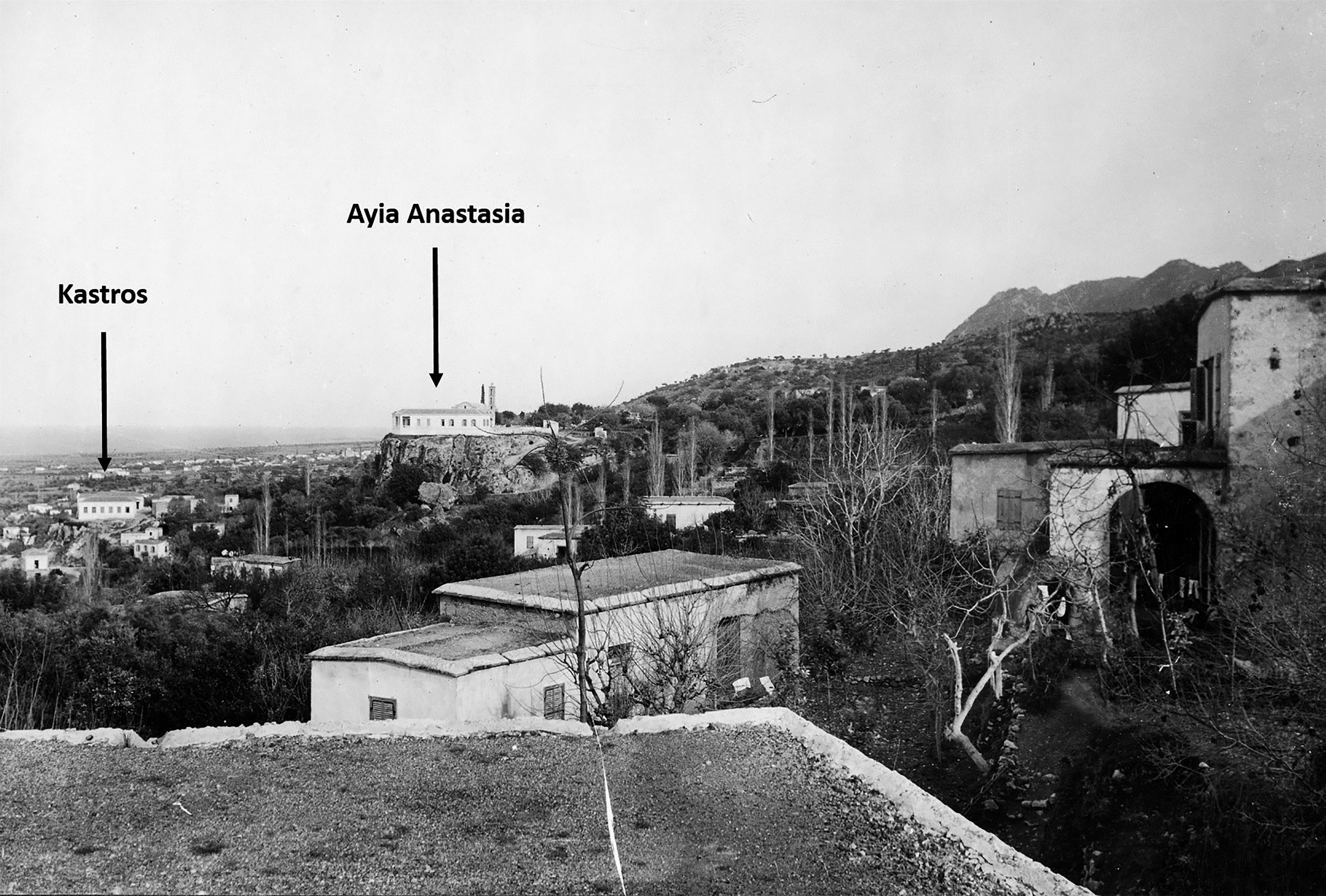

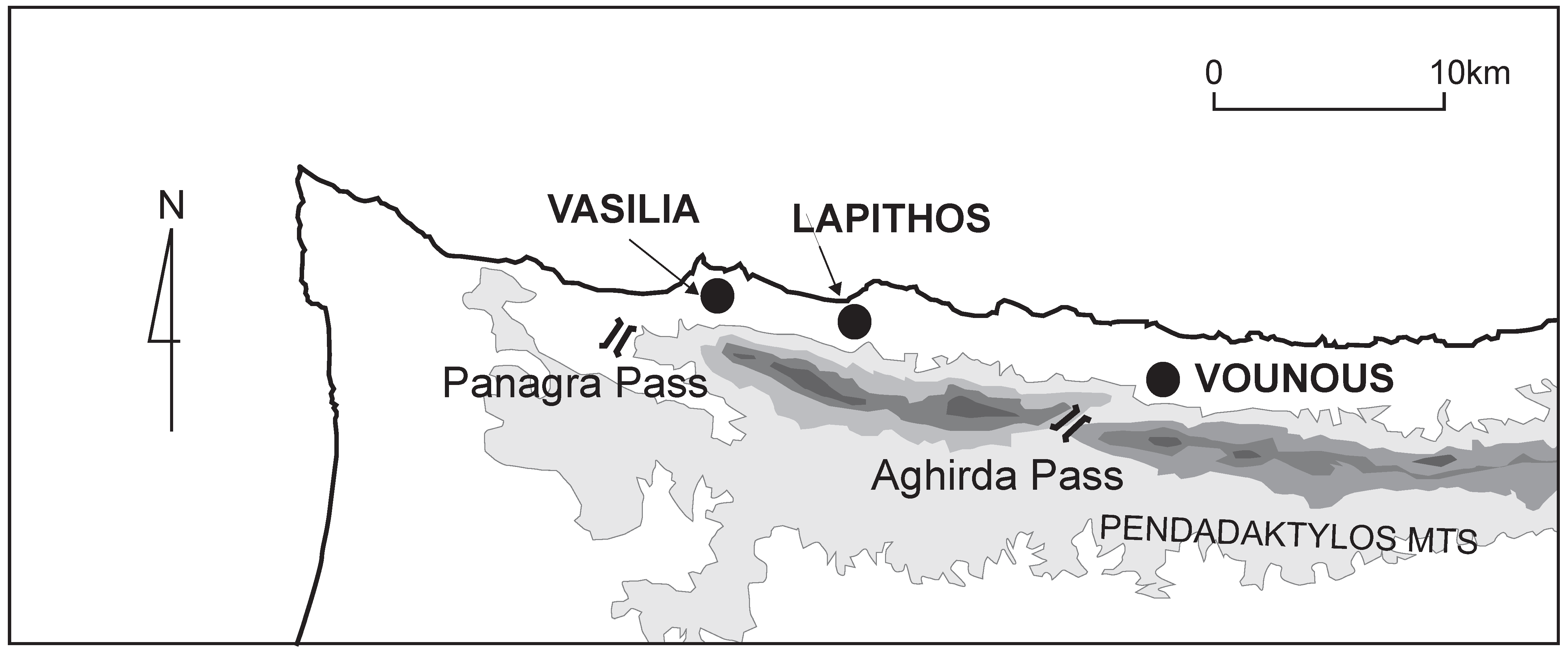
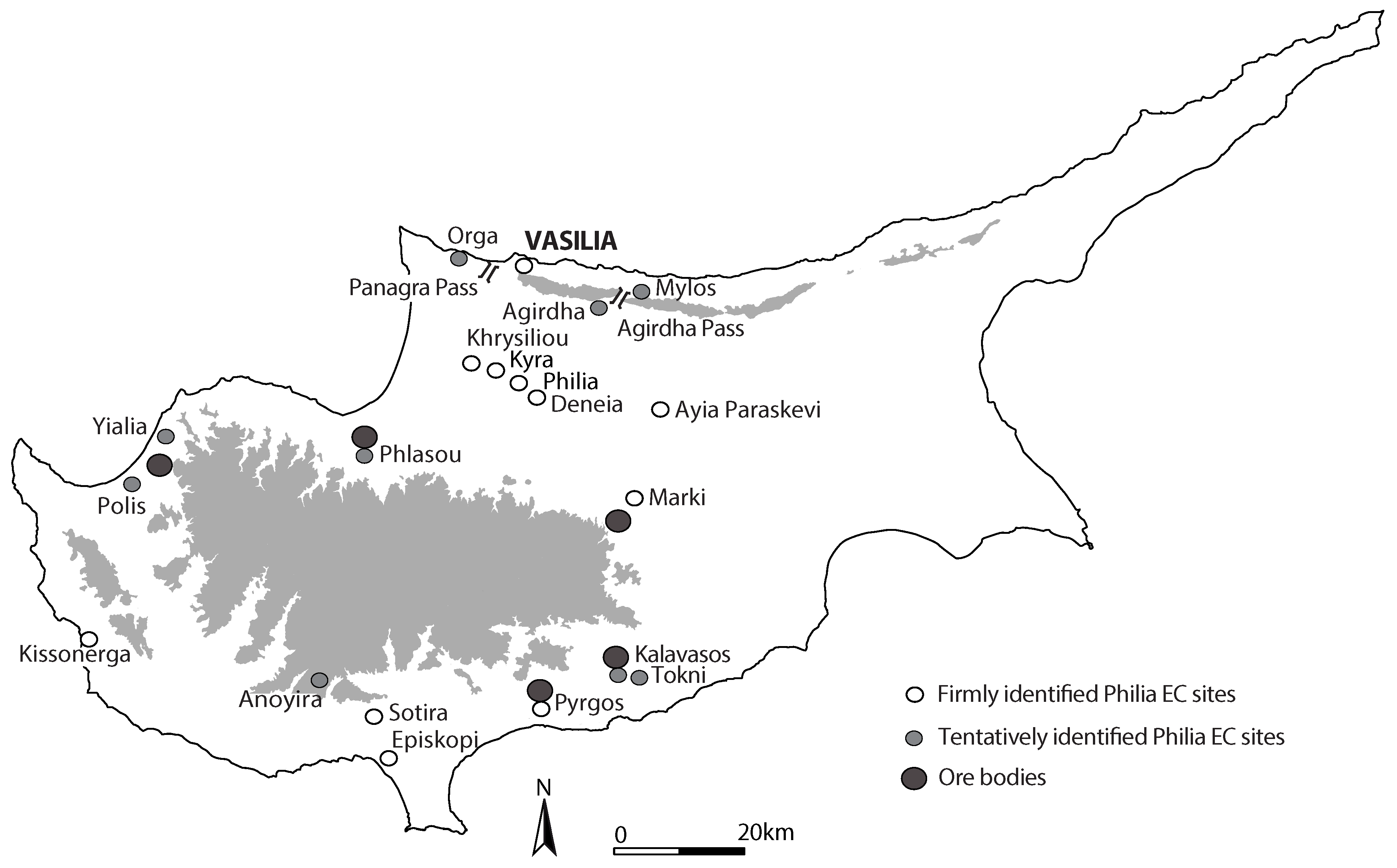

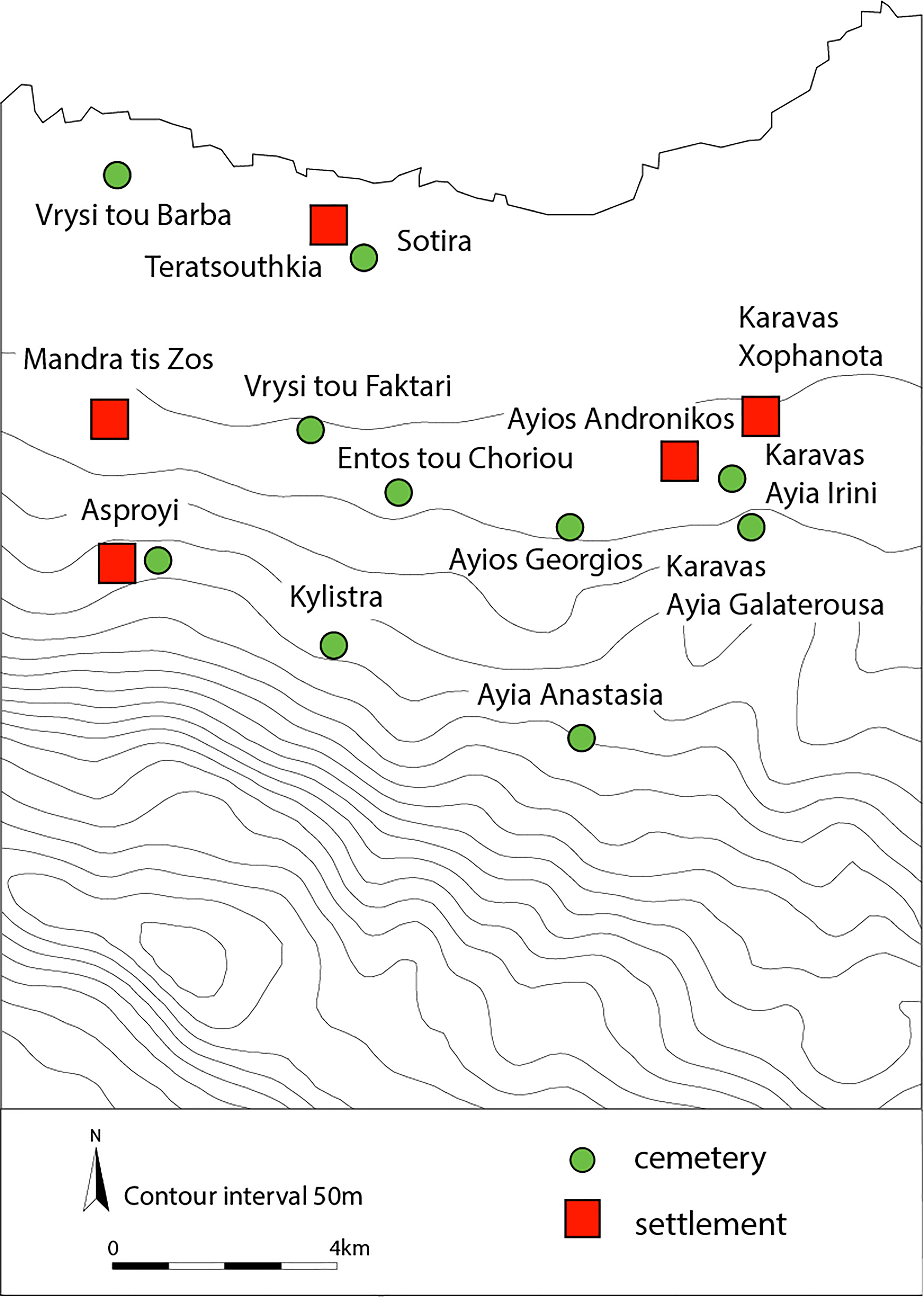
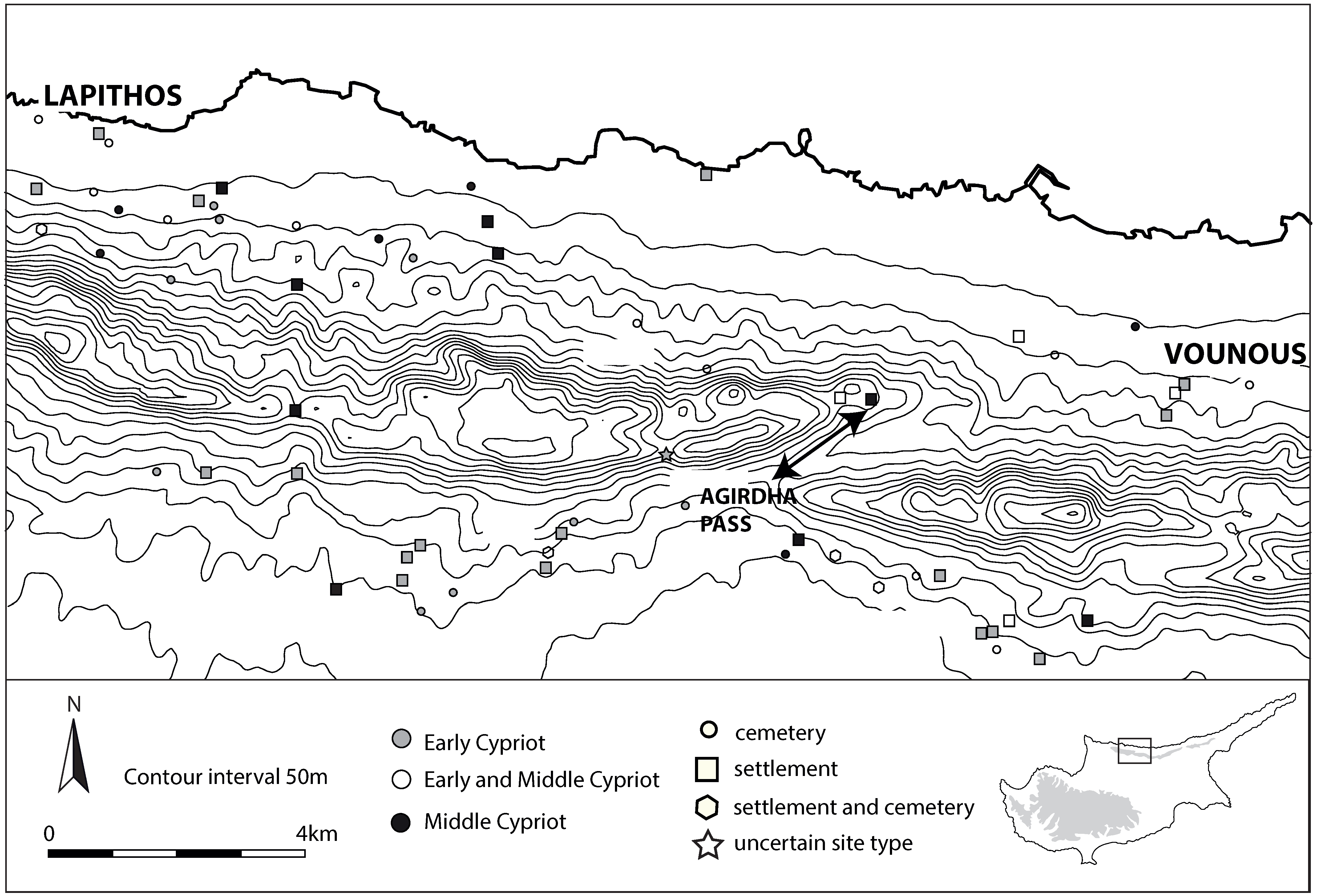
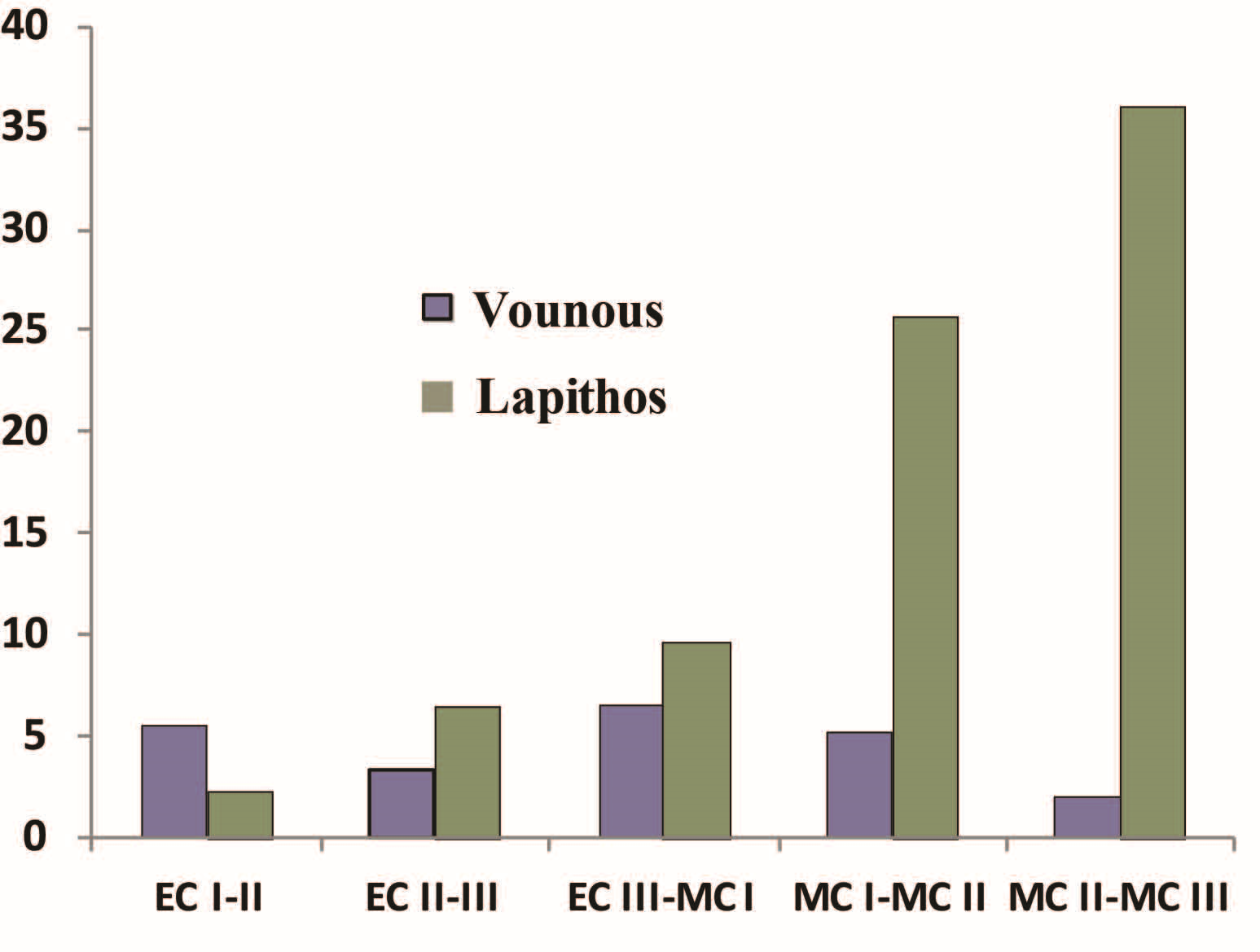

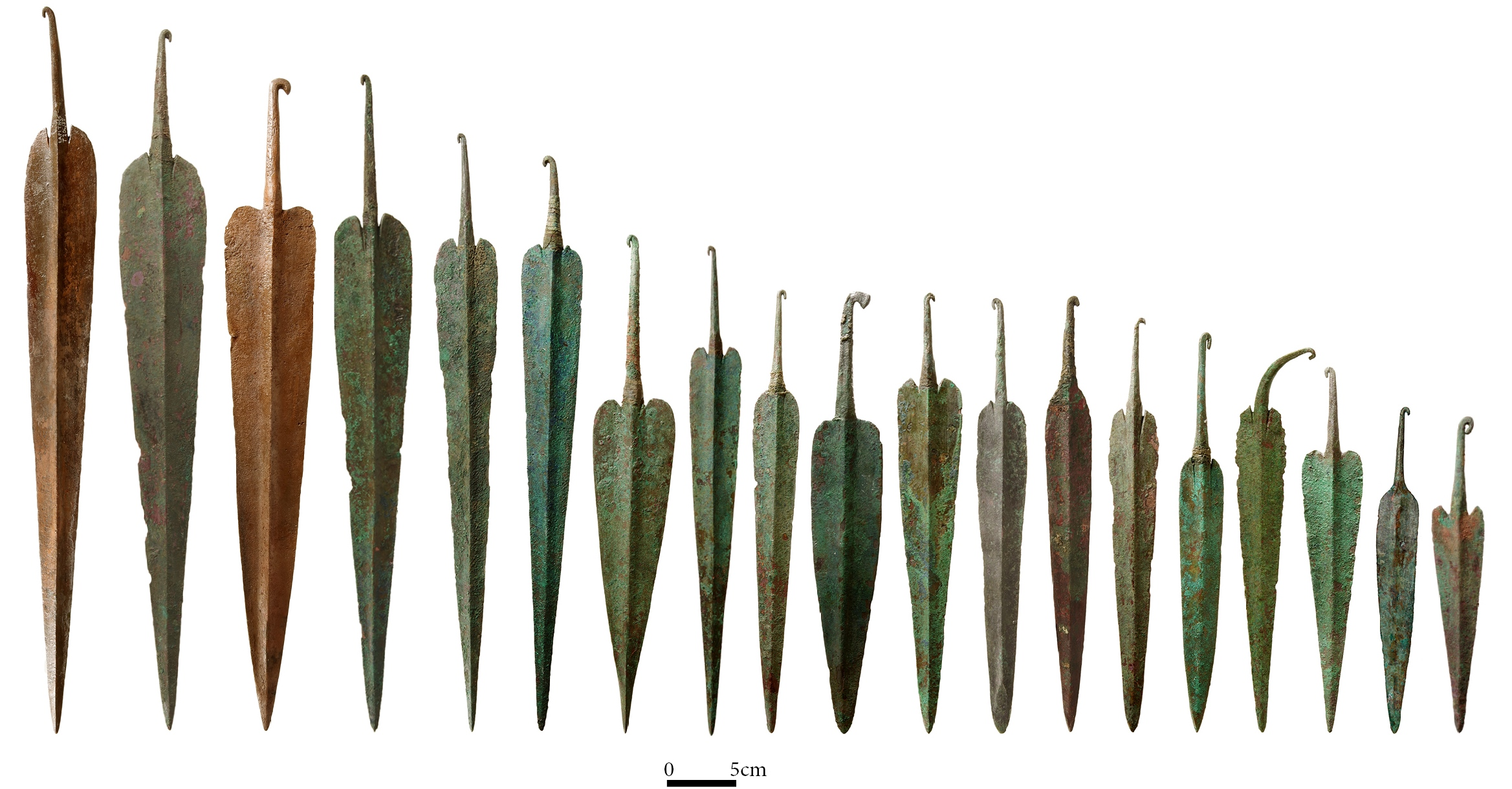
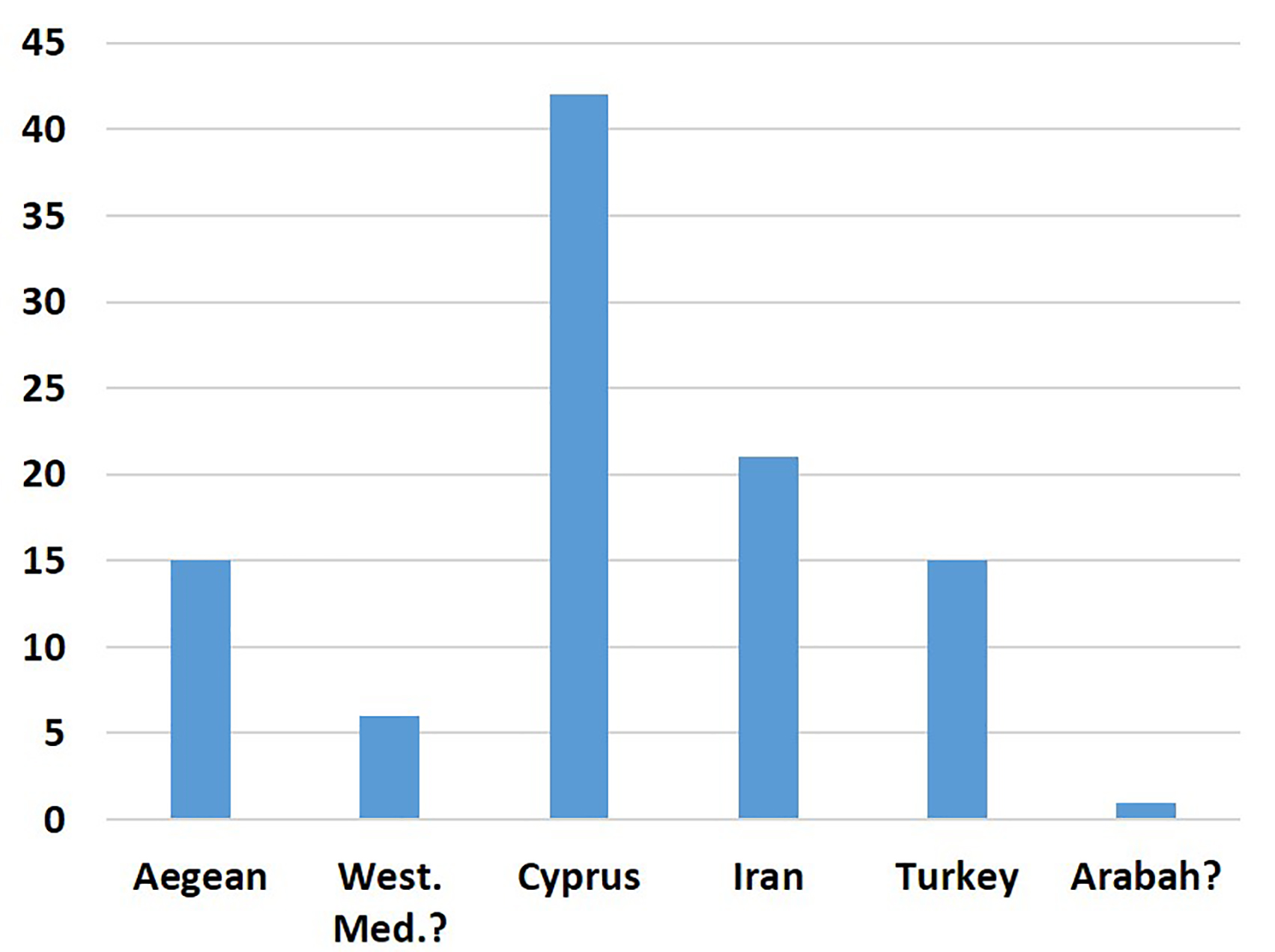
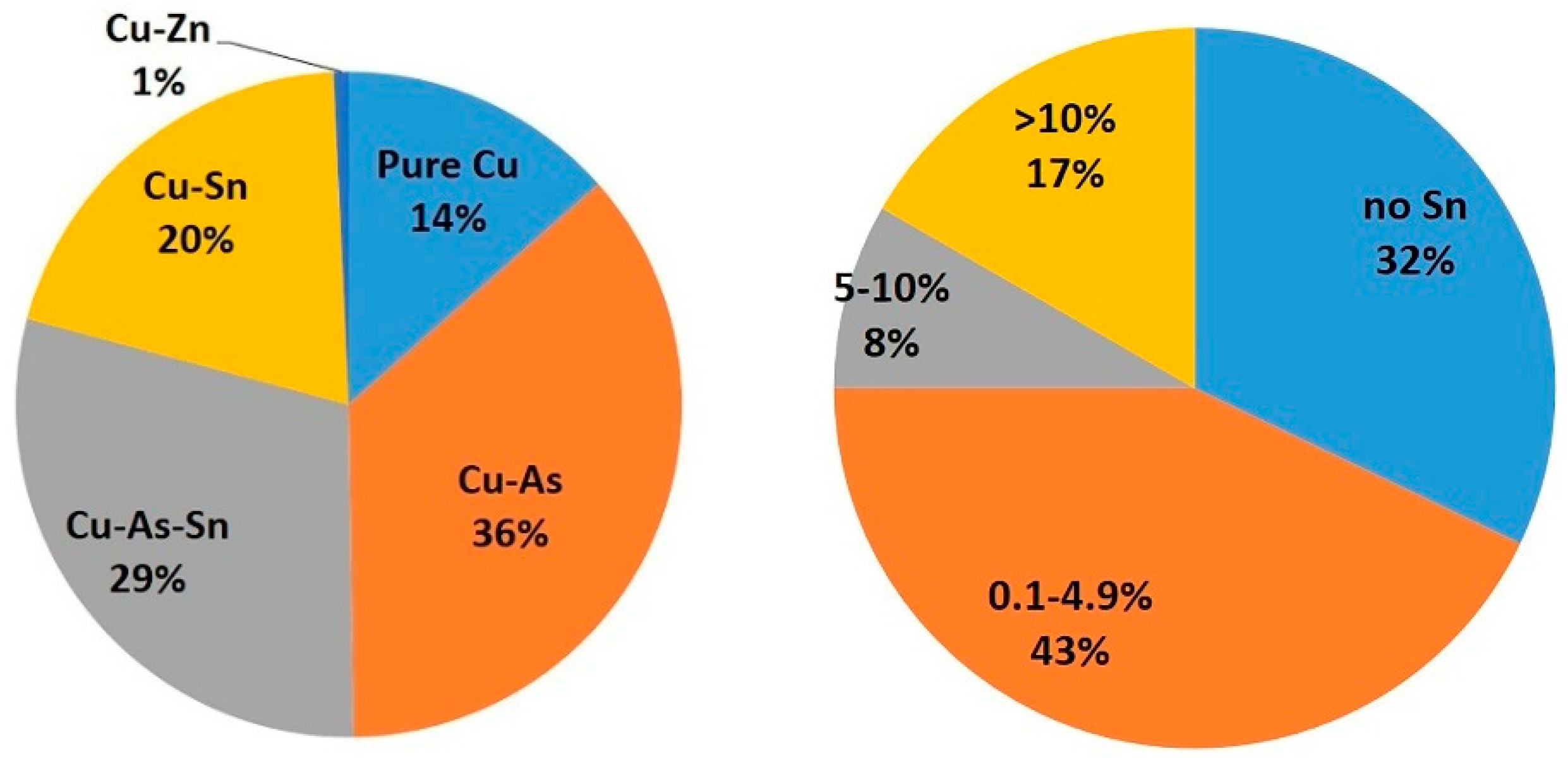
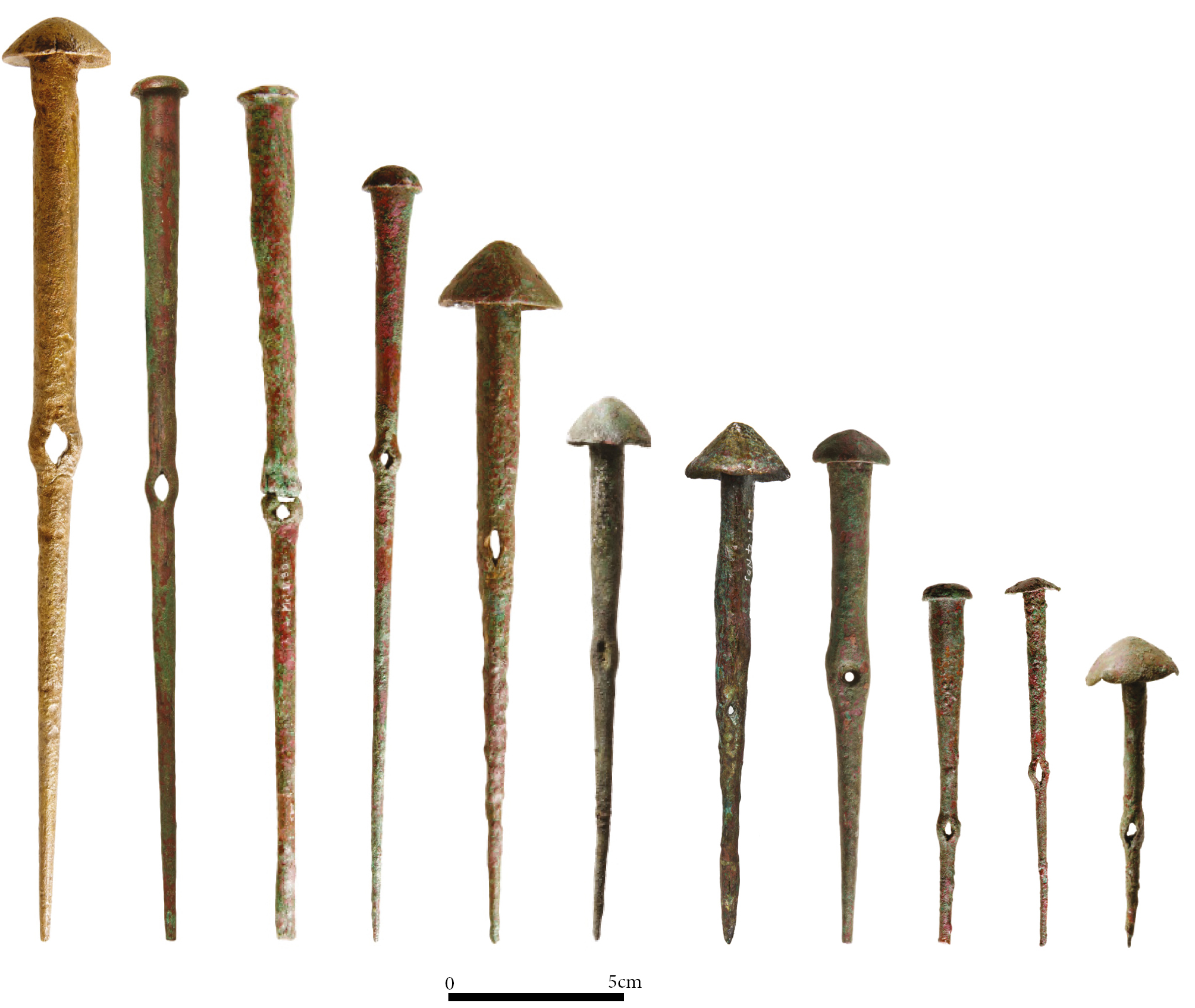
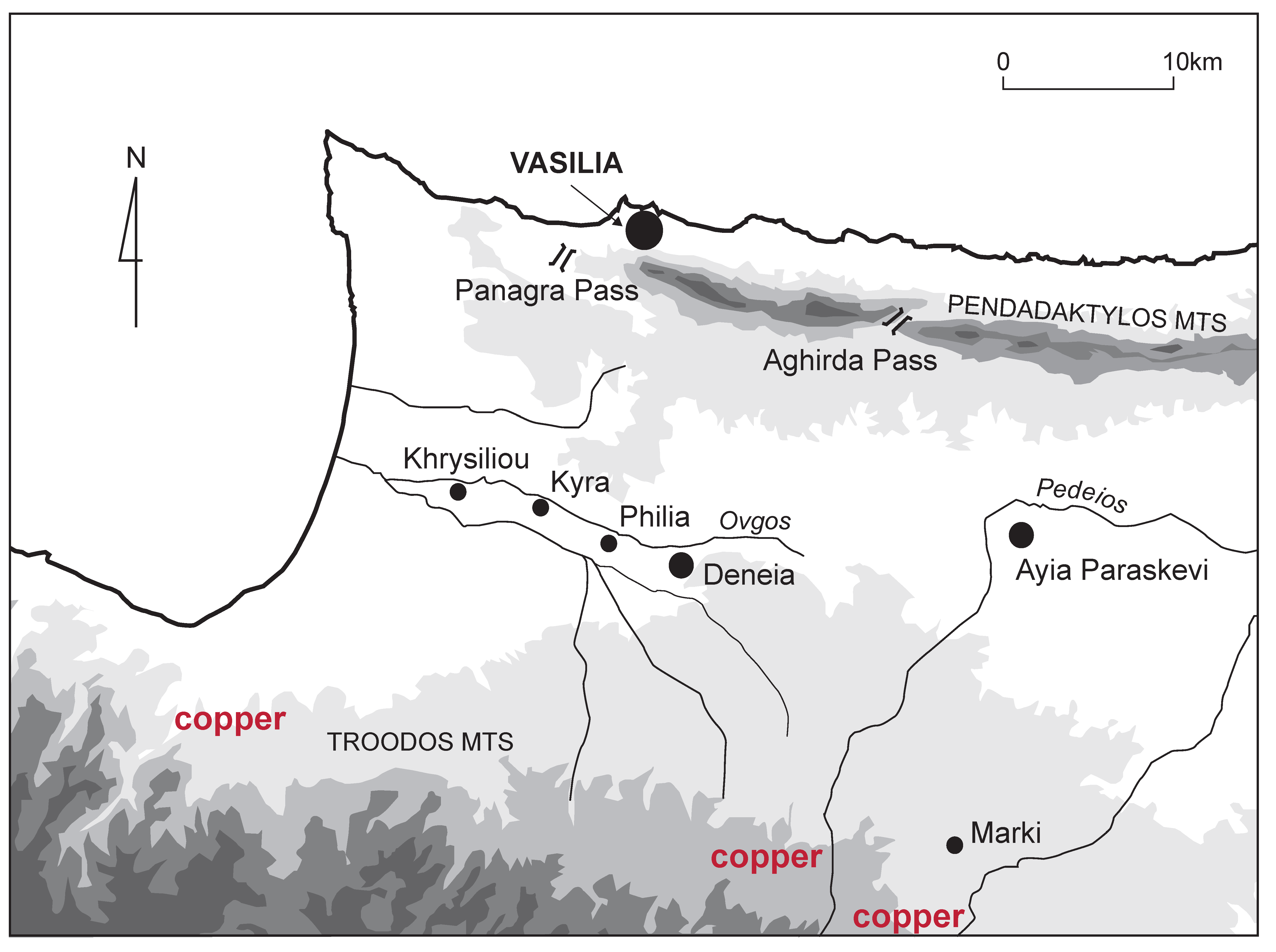
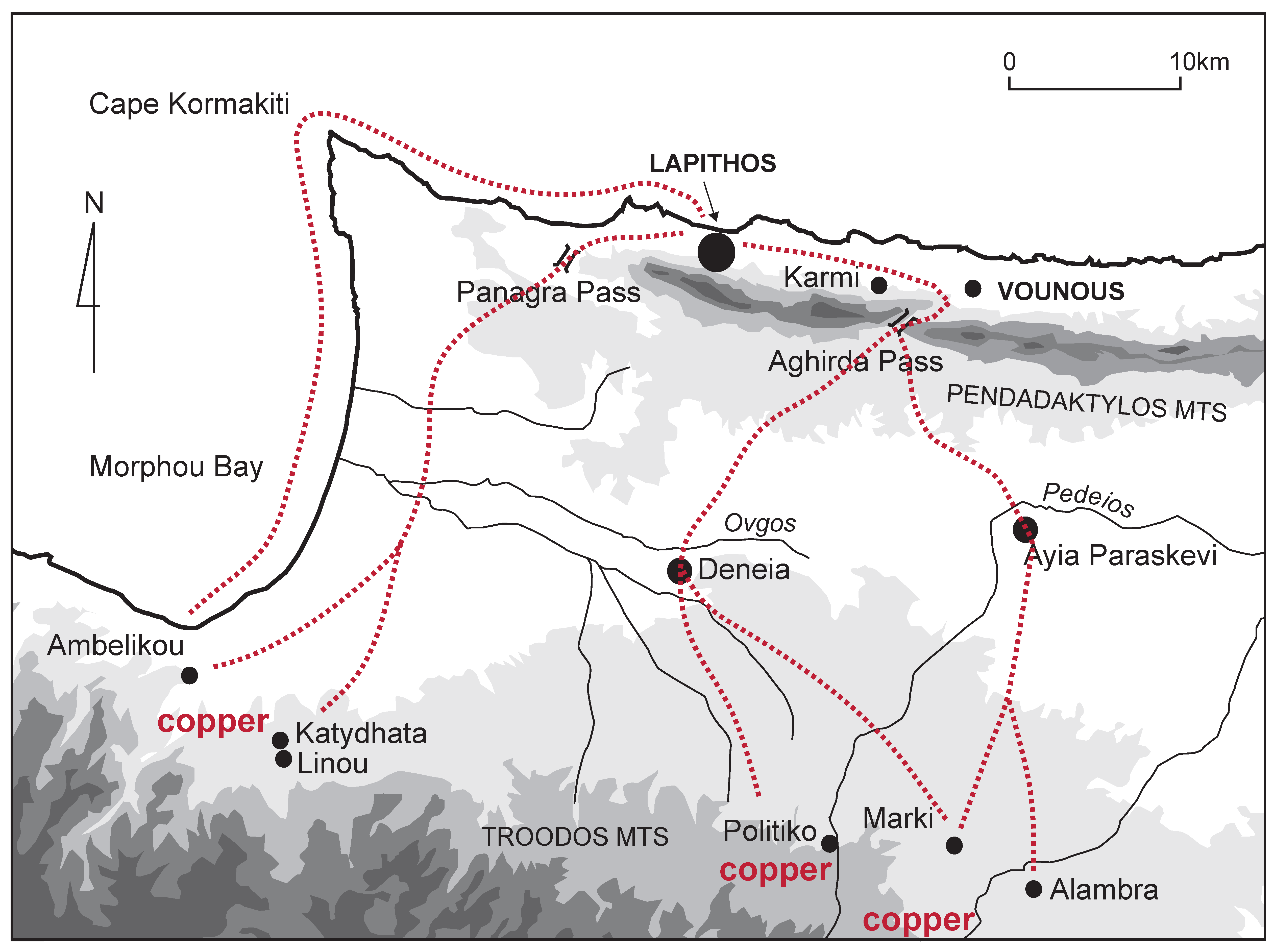

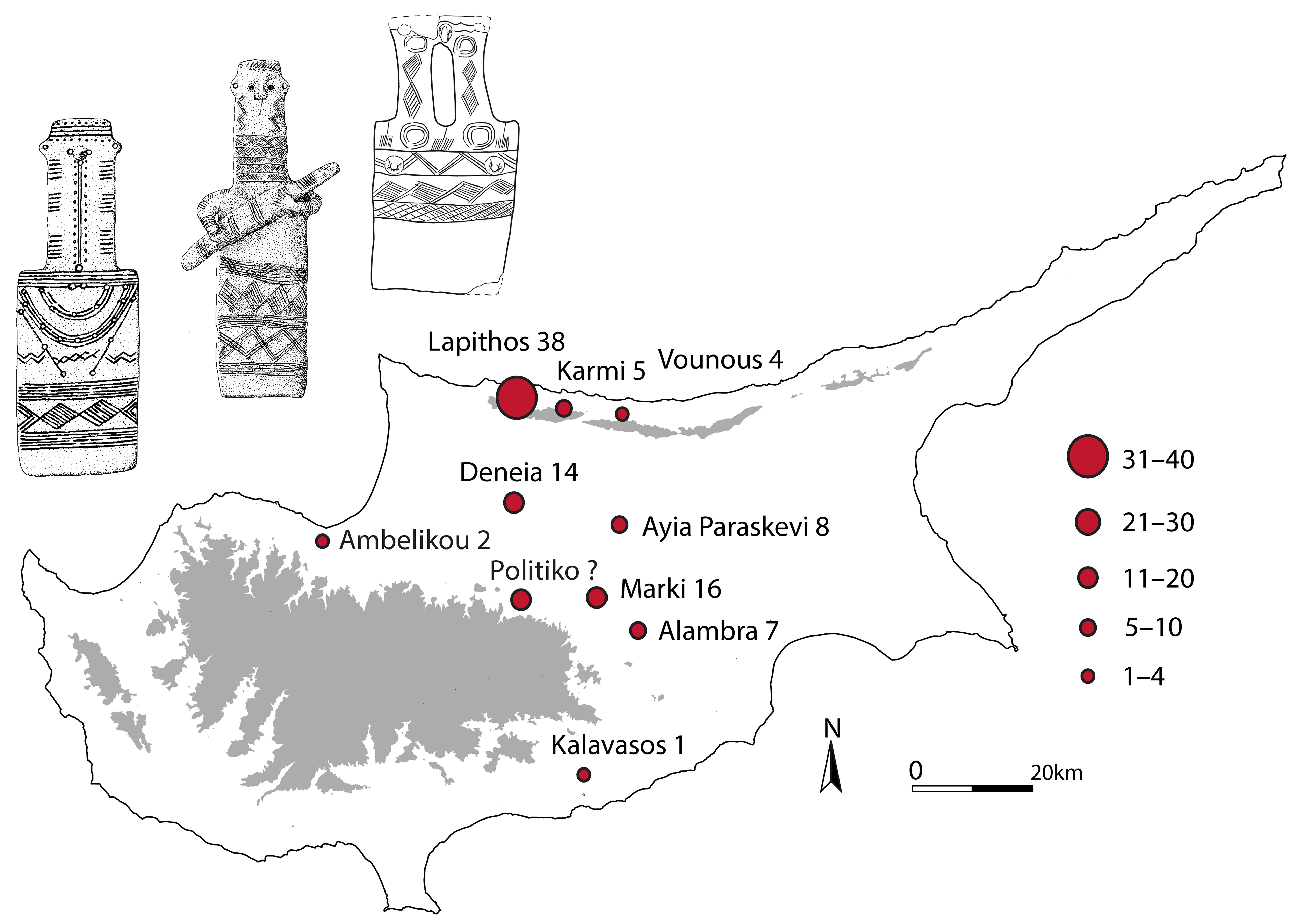

© 2018 by the author. Licensee MDPI, Basel, Switzerland. This article is an open access article distributed under the terms and conditions of the Creative Commons Attribution (CC BY) license (http://creativecommons.org/licenses/by/4.0/).
Share and Cite
Webb, J.M. Shifting Centres: Site Location and Resource Procurement on the North Coast of Cyprus over the Longue Durée of the Prehistoric Bronze Age. Land 2018, 7, 64. https://doi.org/10.3390/land7020064
Webb JM. Shifting Centres: Site Location and Resource Procurement on the North Coast of Cyprus over the Longue Durée of the Prehistoric Bronze Age. Land. 2018; 7(2):64. https://doi.org/10.3390/land7020064
Chicago/Turabian StyleWebb, Jennifer M. 2018. "Shifting Centres: Site Location and Resource Procurement on the North Coast of Cyprus over the Longue Durée of the Prehistoric Bronze Age" Land 7, no. 2: 64. https://doi.org/10.3390/land7020064




